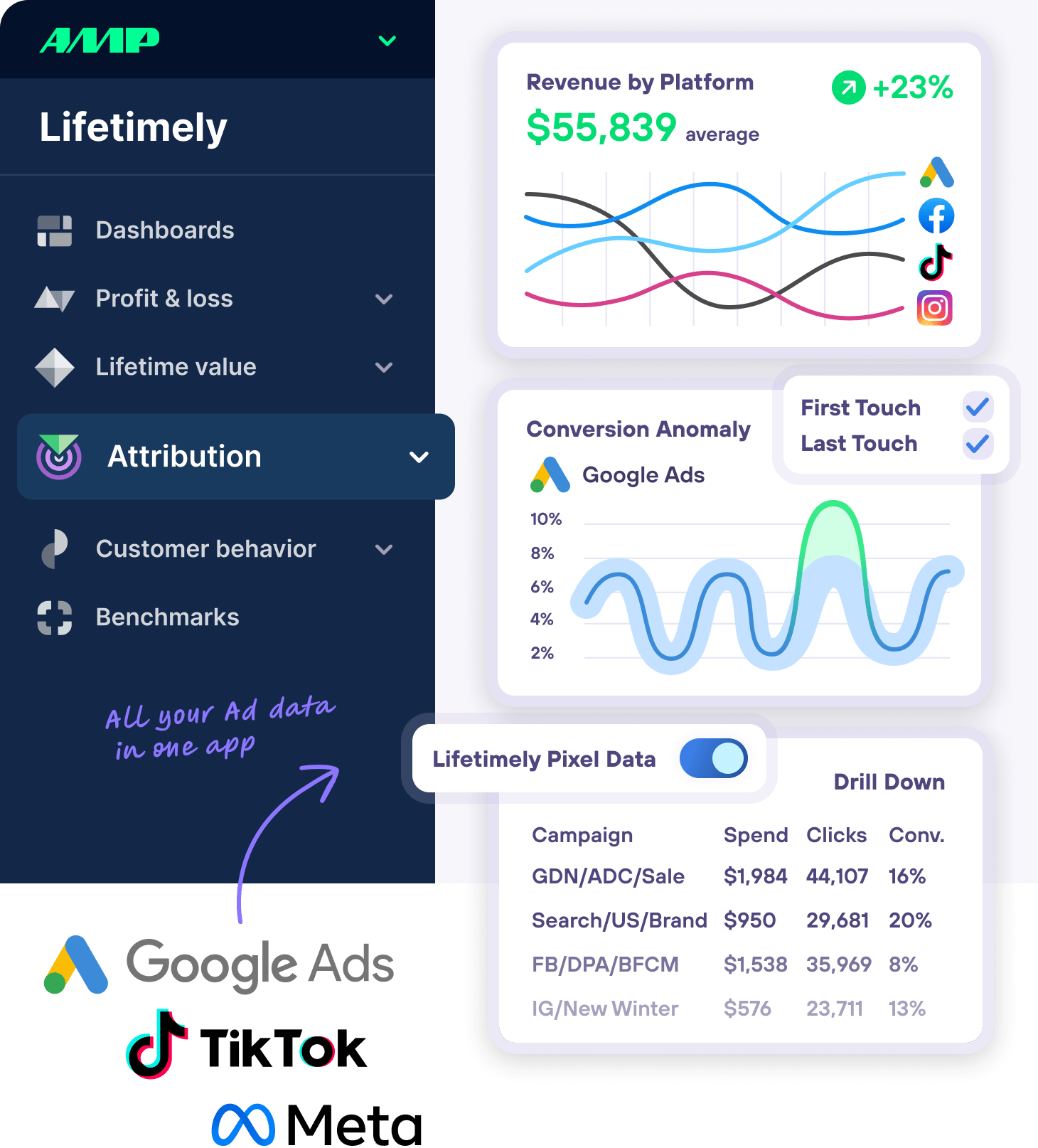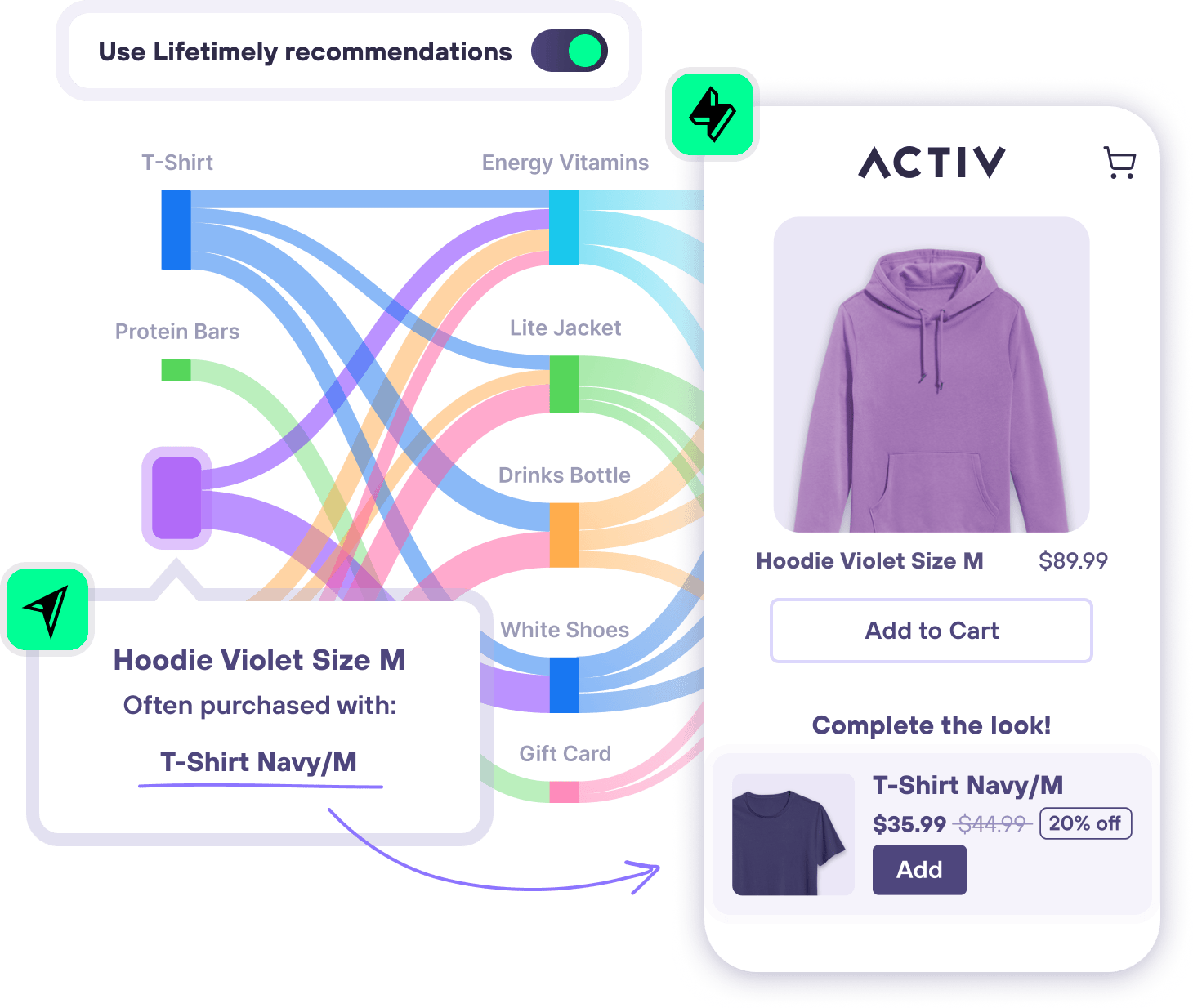Attribution for maximized ad spend: How to optimize performance channels
What is Attribution Modeling?
Attribution, a concept every performance marketing manager of a growing eCommerce business is or should be intimately familiar with as the cost to acquire customers through ad platforms like Google, Meta and TikTok continue to rise. According to a report done by QueryClick in 2024 98% of digital marketers consider attribution to be an important part of their MarTech stack
So what’s the deal with attribution modeling? In a nutshell, Attribution helps us see the impact of our marketing efforts along the customer journey and when done right, increases the effectiveness of marketing efforts by directing resources to the most impactful channels.
Here, we explore the complexities of attribution, providing actionable insights to help you optimize your marketing budget and boost sales.
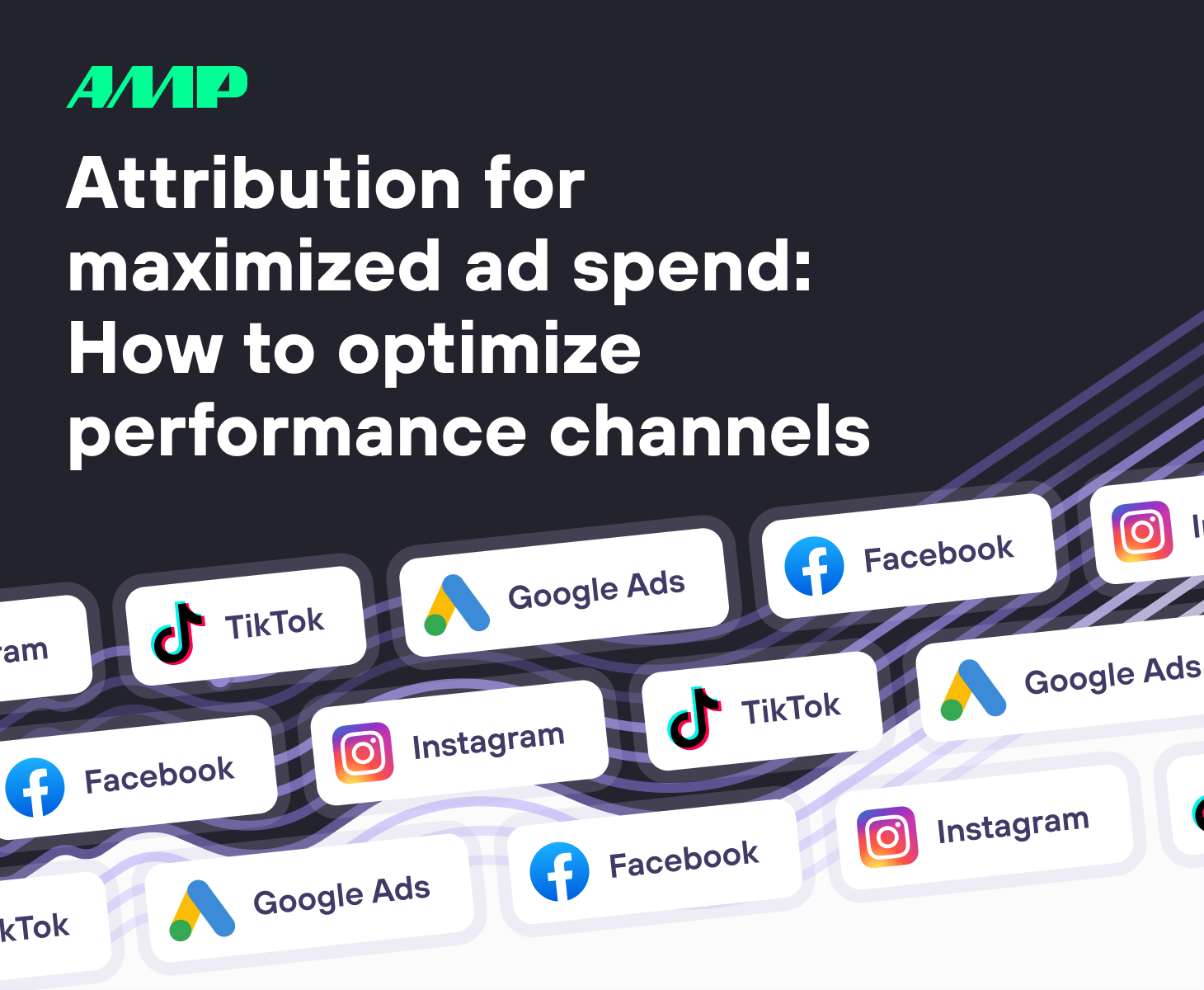
Attribution is the process of identifying which marketing efforts are responsible for driving brand awareness and revenue. It helps merchants answer the following questions;
- Which channels are the most effective in driving sales?
- What is my ROI for each channel?
- Which campaigns are driving the most revenue?
- Am I leaving cash on the table and under-investing in a particular channel?
- Am I over indexing on a channel - Has my ad spend hit diminishing returns?
In other words, attribution is understanding which of these touchpoints, such as ads, platforms, or channels, are influencing a customer’s purchase decision.
What are the consequences of neglecting Attribution Modeling?
Without understanding how each of your paid channels are performing your marketing strategy is akin to firing blanks in the dark and hoping to hit something aka the “Spray and pray” technique. This broad approach is often not efficient as you end up giving equal weightage to all performance channels, even those that do not convert. Moreover, you end up losing conversion opportunities by not allocating more budget to channels that convert better for your brand.
Jonathan Snow, Co-Founder of Avenue Z warns about the consequence of brands losing touch with performance attribution;

I’ve been seeing a LOT of these instances lately. Large brands growing on autopilot without a critical eye on the marketing programs in a long time. Strong brands often have long standing issues that are masked, thanks to the success they’ve endured for years. If you're a brand struggling with new customer acquisition, there's a good chance you're missing something under the surface.
Jonathan Snow, Co-Founder, Avenue Z
Incorporating attribution modeling into your marketing strategy can help you see whether your campaigns are performing well, if your messages are being received, or if your marketing is resonating with your target audience. This will additionally help you manage marketing budgets effectively and optimize ROAS.
Why is attribution modeling important for eCommerce brands?
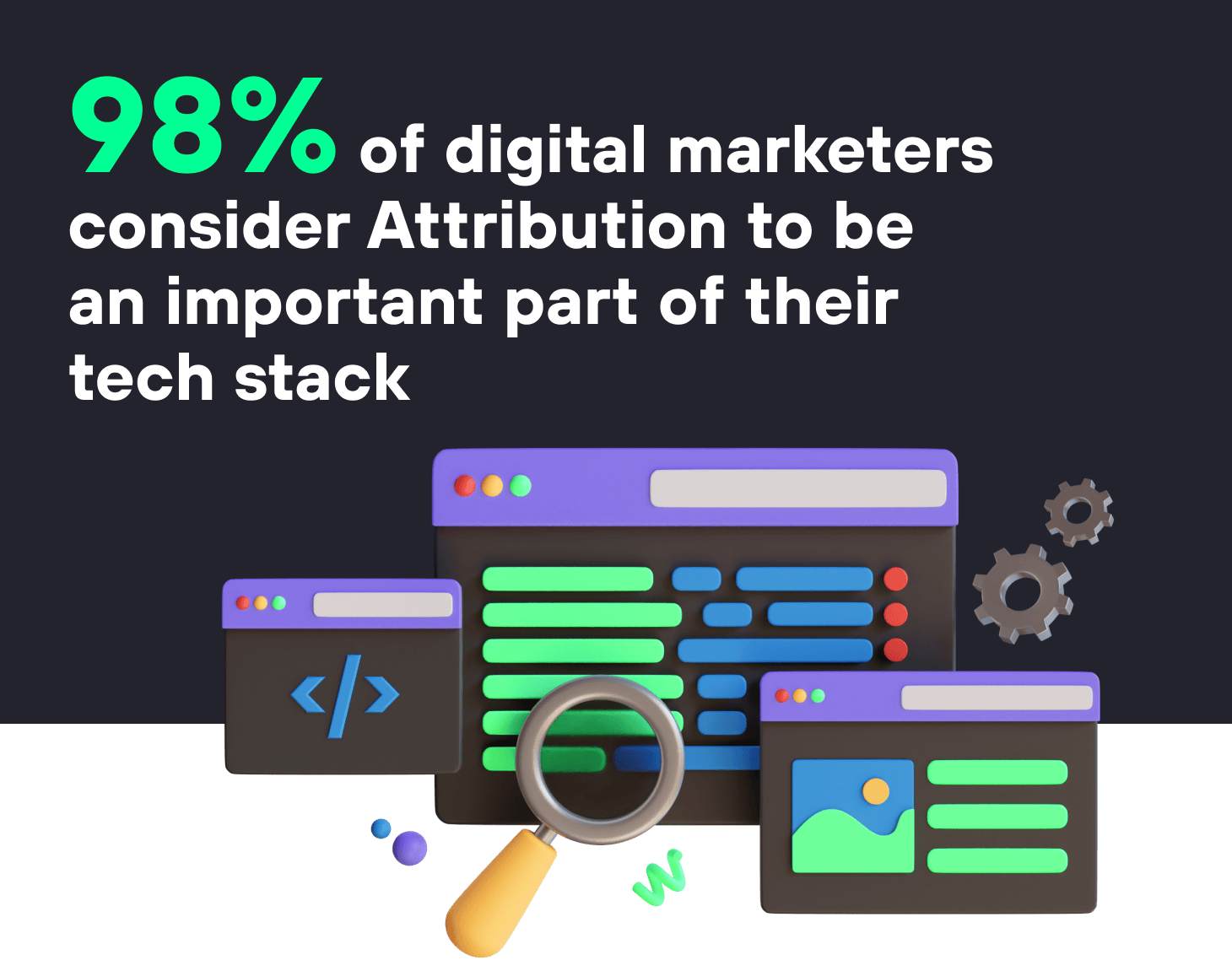
If you manage a beauty and skincare brand, you can use attribution modeling to identify which channels consistently drive sales and which do not. By understanding the customer touchpoints and attributing conversions to the right channels, you can maximize your ad spend by focusing the budget on those channels.
Furthermore, if you sell multiple products, attribution modeling can identify which channels are most effective in driving conversions for each product. This allows you to customize your marketing efforts for each product, making for an efficient and impactful marketing strategy.
Benefits for brands using attribution modeling include;
Cross channel performance analysis
When implementing and iterating on an ecommerce marketing strategy, be it for new customer acquisition or customer retention, understanding the impact of each digital marketing channel in driving desired outcomes is vital. Attribution helps marketers to identify which channels are working and which are not. This allows them to allocate resources more effectively.
Maximizing Digital Ad Spend
Knowing which ad platforms deliver the highest Return On Ad Spend (ROAS) enables merchants to allocate their budgets wisely. For instance, if TikTok ads are driving significant sales compared to Meta, it makes sense to invest more in TikTok. By identifying high-performing channels, you can invest more in what works and cut spending on ineffective channels.
Measuring Campaign Effectiveness
Attribution helps you accurately assess the impact of your marketing campaigns. By tracking which touchpoints contribute to conversions, you can measure the true ROI of your efforts and make data-backed decisions about future campaigns.
Reducing Cost of Acquisition (CAC)
Effective attribution helps identify the most efficient channels for customer acquisition. By focusing on high-performing ads, eCommerce brands can lower their CAC and increase profitability.
Improve Customer Insights
Attribution provides valuable insights into customer behavior and preferences, helping brands tailor their messaging and offerings to meet customer needs more effectively. Understanding the customer journey through attribution enables you to personalize the experience. You can tailor your messaging and offers based on how customers interact with your brand, leading to increased engagement and conversions.
By understanding and implementing attribution models, you can gain a deeper understanding of your customers, optimize your campaigns, and drive sustainable growth.
What are the different Attribution Models?
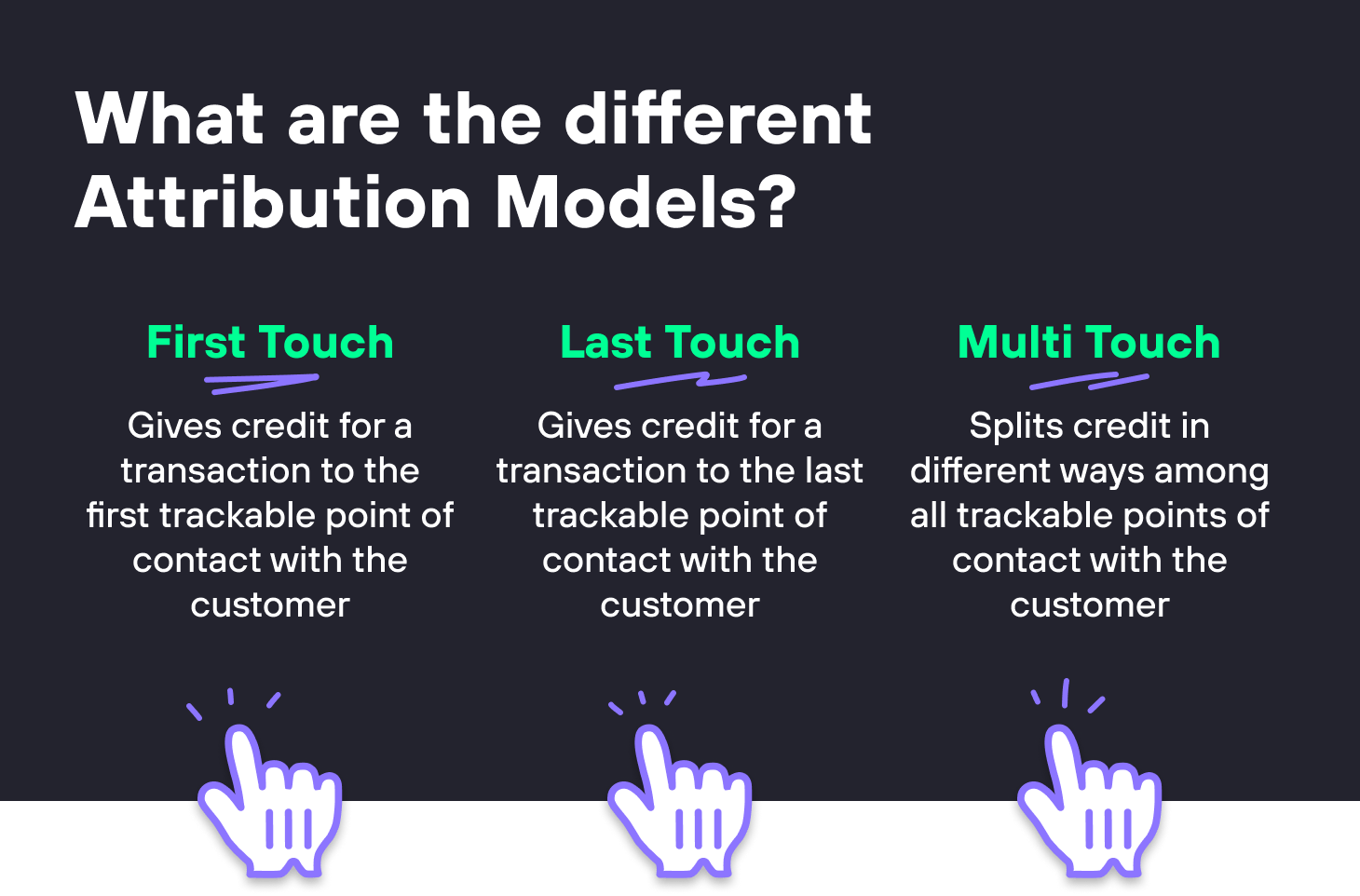
Attribution models is the structure that determines how credit for a conversion is appointed to different ads, platforms, or channels. The models fall into these key categories:
Single Touch Attribution Models
First Touch Attribution
First touch, or first click, attribution assumes that a customer's conversion is a result of the initial marketing asset they come across. The entire credit is attributed to this first touchpoint, regardless of any subsequent interactions with other channels.
Pros:
- Provides useful insight into the preferences of new customers, particularly those at the top of the funnel.
Cons:
- Does not give credit to any customer interactions following the initial touchpoint.
- This creates a bias against other channels,as the first touch point may have generated website traffic but touchpoints further down might actually be responsible for a sale.
Last Touch Attribution
Last touch, or last click, models give credit to the last customer touchpoint before the purchase. It disregards any earlier interactions and assumes that the final interaction is responsible for the conversion.
Pros:
- Useful for highlighting the prompt that caused the conversion, even if it's after being influenced by other channels.
Cons:
- Doesn't account for touchpoints preceding the final interaction.
- Similar to first click, last click does not give credit to other channels that might have contributed to the outcome.
Multi-Touch/Fractional Attribution Models
These consider all interactions throughout the customer journey, assigning fractional credit to each touchpoint. Multi-touch models provide a more holistic view of how various channels contribute to conversions.
Time Decay
Remember that toothpaste ad you saw on Facebook 7 years ago? No one does. Time decay models give more weight/ credit to customer interactions that happen close to the sale.
Linear Attribution
Liner attribution considers every interaction and evenly distributes credit across all touchpoints regardless of when they occurred in the buyer’s journey.
U Shaped
The U shaped model gives the most credit to the first and the last interaction and not much credit to everything in between.
So…which model is the most popular for eCommerce brands? (Last Touch Attribution)
As we mentioned before, last click attribution gives full credit for a sale to the last customer interaction before the purchase. For example if a customer first clicks on a PPC Google Ad, then receives a marketing email and finally lands on an Instagram ad before buying your product, the Instagram (Meta) ad will receive all the credit for that conversion.
One of the biggest advantages of using last click attribution for eCommerce is that we can easily see which channels and campaigns are the biggest revenue drivers. It also easily allows digital marketers to understand what type of creatives work best to close a sale- does a video with customer testimonials work better than a comparison of your product to a competitor?
Finally, last touch attribution is just-simple. It focuses on one touchpoint which makes it easy to test and iterate quickly. But this begs the question; “Is last-touch attribution oversimplifying channel performance and therefore is it inaccurate?”
Because last touch attribution disregards all other touchpoints, it often leads to an incomplete or skewed understanding of the impact of marketing channels on conversions. This skewed view can cause a misallocation of funds from your marketing budget. Last click conversions will more often than not, be from the bottom of the funnel marketing efforts. If you allocate most of your funds to only the bottom of the funnel, you run the risk of drying up the pipe and not getting enough awareness and interest in the brand.
No attribution model is ever perfect. Each has its own set of pros and cons, as seen with the last click attribution model. Marketing managers need to be able to decide which model tells the right story for their brand.
Lifetimely Attribution
Lifetimely’s Attribution feature gives Shopify merchants easy access to their P&L, Lifetime Value, Customer Behavior and Attribution data all in one place. Get a comprehensive overview of your most important KPIs and metrics and toggle between what the ad platforms are reporting and what the Lifetimely Pixel picks up.
You can also switch between first and last touch attribution models to see where you are driving the most revenue and conversions. This helps you understand where you should focus your spend to get maximum returns.
Notice a sudden spike in conversions but don’t know what caused it? Lifetimely can help with that too with Anomaly Detection. Track trends, spot spikes and analyze dips in spend and performance. You can also dive deeper into the channel and campaign level with drill-down reports on these anomalies.

I’m really excited about Lifetimely doing even more. I don’t want to have 30 different Shopify apps running. Even if other attribution apps were the same price, and they’re not!.. I would rather have everything under one roof.
Joe DeMars, Digital Marketing Manager at Equator Coffees
The Relationship between content operations and attribution modeling
Content operations have a significant impact on attribution modeling. Here are some aspects of content operations to factor:
- Quality: In order for your content to perform well, it needs to be of good quality. Informative, timely, actually useful content is much more likely to get people engaging with it than content that is stale, poorly written etc. More engagement drives higher conversions, all of this directly influences attribution modeling. So focus on quality over quantity with your content but ensure that you are covering the content needs across the funnel.
- Consistency: There’s nothing new about being consistent when it comes to your content. Consistent, reliable content builds credibility for the brand. However many people forget to be consistent when it comes to content operations BEHIND the scenes. Make sure you have a level of hygiene when it comes to creating and executing campaigns. A simple example of this would be to standardize messaging and naming conventions at the campaign, ad set, and ad levels. Comparing different messaging or naming conventions make attribution data less reliable.
- Distribution: If you don’t have a solid distribution strategy, there’s no point creating the content in the first place. Determine where your content lives on and where you're likely to see engagement or conversions.
- Engagement: Things like page views, time spent on a page, and social shares can help you understand how much your audience is interacting with your content. This is super valuable data for your attribution modeling, helping you to see which content is driving actions and on which channels.
By focusing on these content-related variables, you'll be well on your way to a more accurate and insightful attribution analysis.
Common mistakes to avoid when attribution modeling
Solely relying on last touch attribution
As we talked about earlier, solely relying on last-touch could skew your marketing strategy to be too heavily investing on the bottom of the funnel activities. It’s akin to giving all the credit on a song to just the drummer of the band. You need all the musicians to create that beautiful sound.
Ignoring the impact of organic search
It's easy to get caught up in paid search and forget about our trusty old friend, organic search. Your organic search efforts can play a significant role in your customer’s journey. So, make sure your attribution model reflects that.
Not factoring in offline channels
One common mistake is not factoring in offline channels. With all this focus on digital marketing it's easy to overlook how offline interactions could be driving sales. Does one of your campaigns include sponsorship on a podcast or a spot on a radio. Are you sponsoring a physical event and have marketing collateral at the event? It’s important to count these as touch points on the customer journey.
'Set it and forget it'
Your marketing strategy and by extension your approach to attribution needs regular updates and tweaks. As your audience evolves, as the popularity of channels shift and as legislation changes- your model will need to adapt.
How to choose the right attribution tool? Hint *Do more with less*
A good tool is one that helps you do more with less. Your key KPIs and metrics tend to span across sales and marketing and so a tool that shows you revenue metrics and marketing metrics under the same roof- saves you the pain of constantly switching between tabs and using spreadsheets *ugh* to validate data from different sources against each other. The goal is to replace spreadsheets and consolidate data- not create MORE work.
A solution like Lifetimely is perfect for Shopify brands that are data-driven and committed to gaining efficiencies.
Liftimely has all of your vital revenue reports like P&L, Lifetime Values, Cohorts & Customer Behavior as well as all of your marketing spend, CPC and ROAS all under one roof. No more tab switching. No more spreadsheets. One source of truth to drive desired outcomes from acquisition to retention.
Wait but that’s not all. Lifetimely does even more with the Lifetimely x Upsell integration. Unlike most automated product recommendations, now you can use your actual order analysis over time in Lifetimely to power data driven upsell and cross sell revenue opportunities in Upsell, to enhance the shopper experience.
Get your attribution ball rolling today with Lifetimely by AMP.


